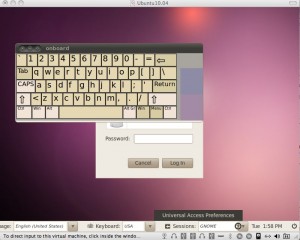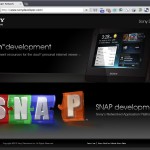CULVER CITY, Calif.,
Jan. 14 /PRNewswire/ -- Sony Pictures Imageworks, the award-winning visual effects and digital character animation unit of Sony Pictures Digital Productions, released the Alpha version of its source code for OSL, its Open Shading Language, it was announced today by
Rob Bredow, Chief Technology Officer of Sony Pictures Imageworks.OSL is a fundamentally different approach to shader languages for visual effects and computer animation rendering. OSL was designed to enable and support the latest developments in rendering technology. Unlike previous shader languages, OSL assumes a rendering system that can perform ray tracing, and provides for natural global illumination and a demand for physical accuracy. All of which is significantly different from the assumptions made years ago when most of the current shader languages were first developed.
Sony Pictures Imageworks initially developed OSL for use with its in-house renderer in the production of animated feature films and visual effects. The language specification released today was developed with input by other visual effects and animation studios, including Rhythm & Hues, who also wish to use it. The code is now available through Imageworks' Open Source website at http://opensource.imageworks.com/
Imageworks announced its Open Source program last August and has spent the past several months preparing OSL for use on its upcoming films.
This early release of code follows the model of the most successful open source programs in which development from this point forward will be done "in the open" for others to watch, use and contribute to as desired. OSL is licensed under a "production friendly" open source license. Imageworks is optimistic that OSL will be adopted broadly by those needing a modern shading language for production needs.
"We're excited to be sharing OSL with the world," said Rob Bredow. "Our goal is to follow the model of the most successful open source software by making our development public. This provides the very best opportunities for collaboration and adoption. Even though it's in its early stages, there is a lot of sophisticated groundwork already laid in OSL. We look forward to the response from the computer graphics community"
OSL TAKES A DIFFERENT APPROACH
According to Imageworks' OSL lead developer Larry Gritz, one of the industry's foremost experts in shading and rendering, shaders in other languages compute the color of an object as viewed from a particular direction. In this way, the shader is a black box to the renderer -- all the renderer can do is execute the shader, for a particular direction, and get the result.
What distinguishes OSL from prior languages is that the material properties of surfaces, explicit descriptions of how light is scattered by them, are treated as a first-class concept that the shaders compute and that the renderer can then manipulate and reason about. The renderer can evaluate these properties, i.e., figure out the outgoing radiance in any particular direction. This is just one of many things OSL can do. It also "importance samples" these surfaces, which is helpful for efficient global illumination because it lets the renderer send the rays in the places that count the most, instead of just groping around in the hopes of finding important light paths. Because sampling and evaluation are de-coupled from the shader execution, OSL allows a renderer to reorder computations in really interesting ways that could greatly improve speed and/or image quality.
Also, OSL is very consistent with physical units throughout, which not only improves the ability to accurately simulate materials and lights, but it also solves some longstanding problems in production, such as matching results between area light sources, emissive geometry visible to GI, and HDRI environment maps. These matches are now possible with OSL.
About OSL (Open Shading Language)
Open Shading Language (OSL) is a small but rich language for programmable shading in advanced renderers and other applications. OSL is similar to C, as well as other shading languages; however, it is specifically designed for advanced rendering algorithms with features such as radiance closures, BRDFs, and deferred ray tracing as first-class concepts.
The OSL project includes a complete language specification, a compiler from OSL to an intermediate assembly-like byte code, an interpreter that executes OSL shaders on collections of points in a SIMD manner, and extensive standard shader function library. These all exist as libraries with straightforward C++ APIs, and so may be easily integrated into existing renderers, compositing packages, image processing tools, or other applications. Additionally, the source code can be easily customized to allow for renderer-specific extensions or alterations, or custom back-ends to translate to GPUs or other special hardware.
For more information and access to OSL, visit http://opensource.imageworks.com
ABOUT SONY PICTURES IMAGEWORKS
Sony Pictures Imageworks Inc. is the Academy Award® winning, state-of-the-art visual effects and animation unit of Sony Pictures Digital Productions. The Imageworks production environment supports live-action visual effects and character animation, all-CG animation, Imageworks 3D stereoscopic, and Imageworks Interactive, a full service creative group that produces websites and supports digital marketing for the studio and outside clients.
Imageworks' achievements have been recognized by the Academy of Motion Picture Arts and Sciences with Oscars® for its work on SPIDER-MAN™ 2 and the CG animated short film THE CHUBBCHUBBS!. In 2008, SURF'S UP was nominated for the Academy Award for Best Animated Feature. In 2007, two of Imageworks' projects, SUPERMAN RETURNS and the all-CG animated feature MONSTER HOUSE, were nominated for Academy Awards in the Outstanding Achievement in Visual Effects and Best Animated Feature respectively. With those two nominations, Imageworks became the first studio to be recognized in the same year in these distinct areas, an indication of the diversity and quality of the company's capabilities. Other Oscar® nominated projects include THE CHRONICLES OF NARNIA: THE LION, THE WITCH AND THE WARDROBE, SPIDER-MAN™, HOLLOW MAN, STUART LITTLE and STARSHIP TROOPERS, for a total of ten nominations.
Imageworks' most recently completed projects include 2012, CLOUDY WITH A CHANCE OF MEATBALLS, G-FORCE, WATCHMEN, VALKYRIE, BODY OF LIES, EAGLE EYE, HANCOCK, SPEED RACER, BEOWULF, and I AM LEGEND. Upcoming projects include ALICE IN WONDERLAND and CATS AND DOGS 2.
Imageworks maintains operations in Culver City, CA; Novato, CA; Albuquerque, New Mexico; and Chennai, India.
Sony Pictures Imageworks Inc. is a division of Sony Pictures Digital Production Inc.
For more information, please visit www.imageworks.com.
SOURCE Sony Pictures Imageworks
RELATED LINKS
http://www.imageworks.com













